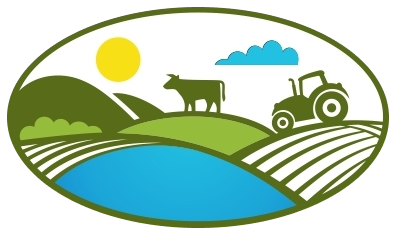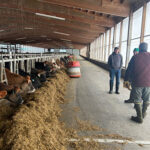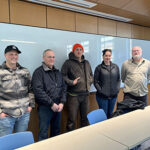
This fall, we visited with one of our newest members: Holly Menguc, owner of Tup’s Crossing Farm, a commercial goat dairy shipping to Vermont Creamery. As we sat outside her barn on a warm, bright day, the turning leaves evoked the story of her own transformation. A native Vermonter and brief city-dweller, Holly returned to her roots eight years ago. With very little experience in agriculture, she bravely embarked on a journey to become a goat farmer, inspired by the idea of reconnecting with the land and community she once called home. Today, she manages a herd of 450 goats–a mix of Saanen, Alpine, La Mancha, and Nubian breeds–on 242 acres in Orwell, Vt.
Champlain Valley Farmer Coalition (CVFC): How did your farm get started?
Holly Menguc: My farm got started in a roundabout way. I grew up in Vermont, went to a local public school, and then attended Middlebury College. I left Vermont when I graduated in the early 2000s. It seemed like there weren’t really opportunities to stay here. I went to New York, then went to Chicago, where I met my husband and had my children. We stayed there until 2016. At that point, my now ex-husband said he wanted to rethink our life. I suggested Vermont, he agreed. He worked in media; he was thinking he’d stay in media, maybe work at VPR. At that moment, I was a stay-at-home mom with two young kids. And I thought, “Maybe I’ll get some sheep.”
CVFC: Why sheep?
Holly: I had sheep when I was a kid. I thought they’d be enjoyable to have, and maybe I could manage a small side income stream with a little farmer’s market type business. We were here for a couple months living with family, when my husband came home one day and said, “We moved back to Vermont. What am I doing trying to stay in media? Let’s do agriculture.” Long story short, I approached NOFA Vermont, and I said, “How does someone who doesn’t really know anything at all about agriculture get linked in with the farming community and how do we learn what we need to know?” They have a Beginning Farmer program, which was really useful. At that time,Maggie Donin was their beginning farm specialist.
CVFC: What kind of support did she give you?
Holly: Maggie sat us down and helped us crunch the numbers. “All right, you have a family of four and you want to be organic dairy farmers. You’re probably going to need x-number of cows, with a mortgage of y, and this amount of land area to graze those cows. Here are some UVM extension courses you can take on grazing, tips on writing a business plan, and someone willing to review it for you.” Then I found, on NOFA’s website, a classified listing for one or two farm hands wanted with housing provided at an organic cow dairy here in Orwell. So, I called them up. It was Sarah and Mark Russell from Swallowdale Farm. I said, “We know nothing, but would you consider hiring us?” And they said, “Why don’t you come down for a weekend and work with us to see if it would be a good fit?”
CVFC: How’d that go?
Holly: At the end of that weekend, my husband was completely sold. I was less sold, but we did end up living on Swallowdale Farm in their tenant housing and working for the Russells for three-and-a-half years. That was our apprenticeship period and how we learned what we were doing. During that time, I never really warmed up to the cows the way you would need to to be a successful dairy farmer. But there’s another farm here in Orwell that milks goats, K&C Farm. I saw the goats out at pasture one day, and I just pulled into the farmyard, and I said, “Excuse me, sir, what do you do with those hundreds of goats?” Keith Tifft said, “I’m a dairy.” All the lights went on for me.

CVFC: Goat cheese has to come from somewhere! What happened next?
Holly: It blew my mind! I didn’t know there were bulk milk commercial goat dairies in Vermont. I milked for the Russells very early in the morning, then I’d run over to the Tifft farm and finish the morning milking shift with them there. In the end, he paid me for my shifts in kid goats, born the following spring. We began discussions with Vermont Creamery, got the contract to begin shipping milk in 2019, purchased an additional herd of 150 adult does and started shipping. Originally, we were forced to operate out of a small rented barn in a different location in Orwell. Locating a farm property suitable for the scale of the herd we intended to manage was initially a challenge. Then we found this farm through a friend and rented it until we were able to gather the necessary capital to make the purchase.
CVFC: That’s an amazing origin story!
Holly: It’s been very, very humbling learning how to become a farmer as an adult who did not go to school for it and was not raised in agriculture. We were supported by the community of farmers around us we found here in Orwell. We leaned heavily upon them. We put in our dues learning cow dairying before we ever got the goats, and then applied all of that financial knowledge, milking knowledge, and equipment knowledge to the new venture. We just had to add in a steep learning curve of veterinary and animal husbandry specific for the goats.
CVFC: Today, your farm is you and a small team of part-time employees who milk and do heavy equipment work. Out of all the things you do, what do you think is the most important?
Holly: I think the most important thing I bring to the table is forward-thinking, the projections of what’s going to happen. What am I doing now so that I can achieve something six months from now? What am I doing now so that the farm will be more efficient in three years? Having my eyes on the goats every morning while I milk is also crucial. Goats go downhill much faster than cows do. With a goat you have maybe 12 hours to diagnose and treat before she dies.
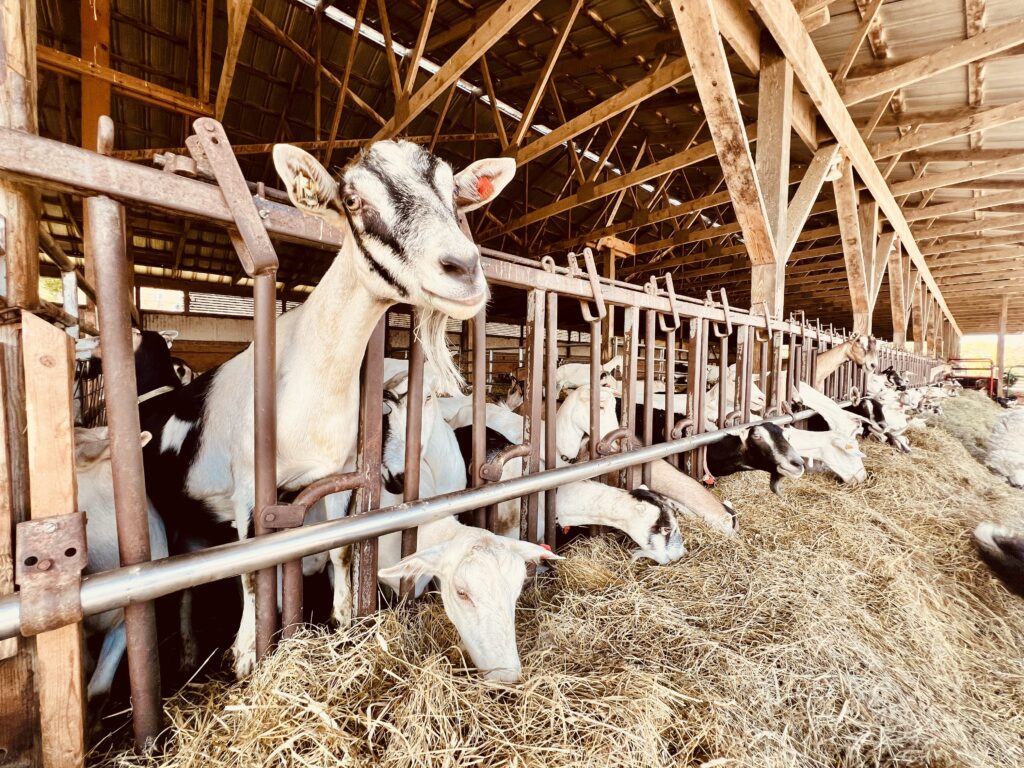
CVFC: What do you think makes your farm operations unique?
Holly: I run two separate herds, an A herd and a B herd, each in their own barn. The A herd kids in the spring and the B herd kids in the fall. This set-up requires a bit more labor but makes my milk check more steady year-round, like it would be at a cow dairy, because I have a constant milk supply. It also benefits me financially because we get a winter pay price premium for milk shipped between October and January.
CVFC: What else?
Holly: I think my ongoing research into the viability of extended lactations is pretty interesting. Together with Hannah Sessions of Blue Ledge Farm, I was the recipient of a grant from the Northeast Dairy Business Innovation Center (NE-DBIC) that was focused on studying extended lactations in goats. Based on our study, my five-year plan at this point is to keep the two herds, but have each one of these two herds eventually running on a two-year lactation cycle. Whereas right now, traditionally in America, goat dairies do 10 months, exactly like a cow, in Europe, they’ve switched to extended two year lactations as the norm. At the moment I have about half of my herd running on extended lactation at any given time, and that percentage will continue to rise over the next few years.
CVFC: What are the benefits of this model?
Holly: Financially it makes sense to level your milk supply year-round, have fresh milk coming in in time for the winter pay period, and expend less capital on labor, vets, and kid care associated with kidding seasons. I also think it’s the most humane thing to do because fewer pregnancies means less stress on the animals and less danger of complications leading to loss. It’s less intensive kidding seasons for me with fewer goats giving birth simultaneously and it is fewer kids flooding the market.

CVFC: What else are you proud about in how you run your farm?
Holly: One other thing that we do here at Tup’s that is a point of pride for me is grazing our goats, both milkers and youngstock. As youngstock are particularly susceptible to parasites we take great care to maintain bio-security between the youngstock barn and the rest of the farm. I have a youngstock-only pasture. We let that pasture rest six months between groups and so far, it’s been good. I credit access to the outdoors for helping build strong legs, lungs, and good conditioning within our herd.
CVFC: What are some of the practices you’ve implemented to support water quality, soil health, and climate smart farming?
Holly: My use of water is a fraction of what it would be if it was a cow dairy. Everything in the parlor is a little smaller, and the animals drink less. There is a protected wetland that runs through this farm that we have kept protected. A farmer before us made four gravel cow fords that go across the wetlands and leaf to the far pasture. My goats won’t get their feet wet, so we had to build a bridge across the fords because even an inch of water was a no-go for them. We keep our manure in an old bunk. It’s not running off, and it gets taken away twice a year to get turned into Moo Doo by the folks at Vermont Natural Ag Products. I don’t yet have the equipment to spread it on our own land, which I’d like to do some day.
CVFC: Why is it important to you as a farmer to be a good steward of the environment?
Holly: There’s so many aspects to that. One, why am I here in Vermont? I’m here in Vermont because I think Vermont is an incredibly special, unique place. And if I’m going to be living here and working the Vermont land, I’m going to try to treat it the best way possible and leave it in a better condition when I’m done farming than how I found it. It’s pride of place and pride of being a Vermonter. I know I’m in a very energy-intensive career. I try to appreciate that, “Okay, I did use a lot of water today, but also now I’m regenerating the land the goats are on.” I feel like it’s a trade. You have to try to balance your use and what you put back.
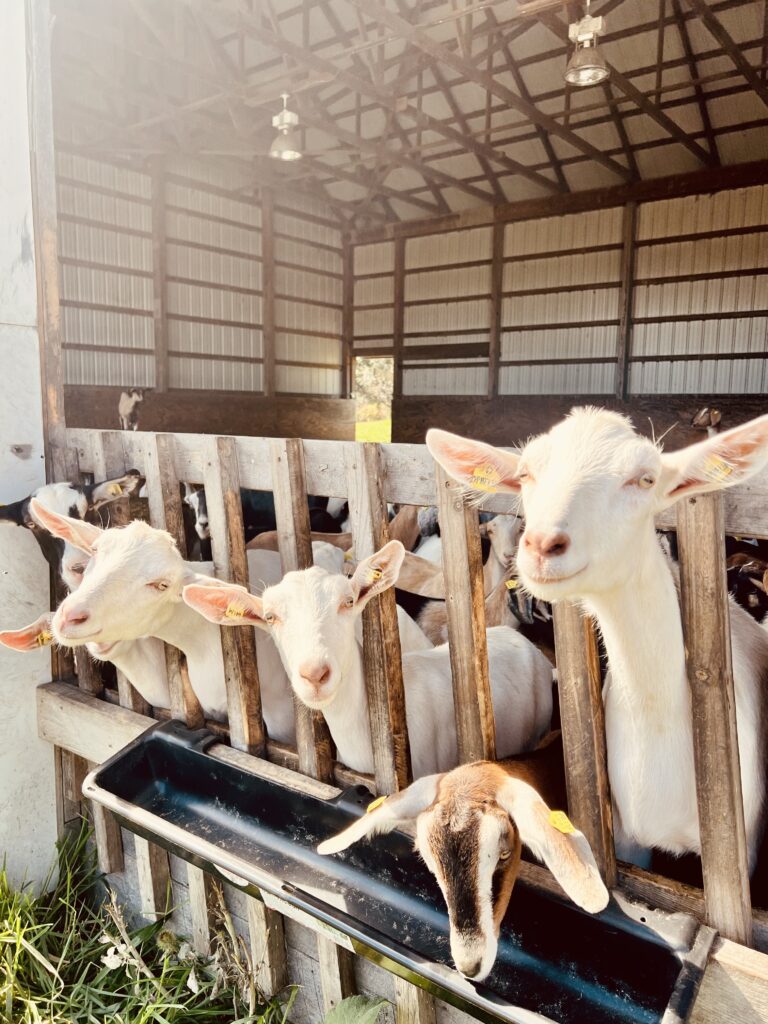
CVFC: You initially got involved with the Farmer Coalition through our internship program. What interested you most about hosting high school students?
Holly: The internship program has been wonderful. I had some trepidation about it at first because my time is precious and there is a lot of protocol in place between managing the two herds, breeding, and kid care. I needed to be sure I found the right student who would take the work seriously. To date, we’ve hosted two students and I hope to continue the relationship with the CVFC Internship program in the future. This spring we had a student come twice a week in the mornings before school and put in a few hours of bottle feeding and labor and delivery. She was a senior and was on her way to college for an agriculture program. Then this summer, we hosted another senior. He has no current intention of pursuing farming as a career, but it’s important to him to be a well-rounded human being. His enthusiasm has been wonderful. He helped me all summer with hoof trimming and general herd management and transitioned the internship into a paid position. He’s currently here twice a week doing the evening milking shift.
